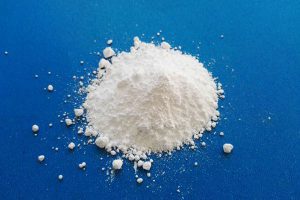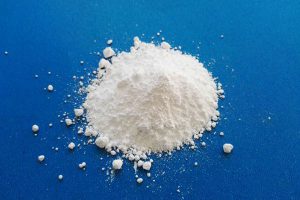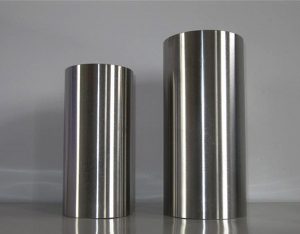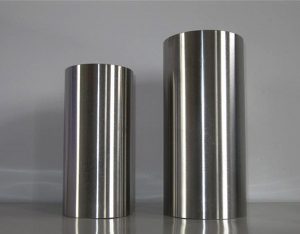Zirconium dioxide is a high-temperature and corrosion-resistant ceramic material. It has three crystal structures, and its volume changes with crystal transformation:
1) When the temperature is lower than 1373K, it is a monoclinic crystal,
2) It is a tetragonal crystal at a temperature of 1373~2173K,
3) When the temperature is higher than 2173K, it is a cubic crystal.
In order to overcome the shortcomings of the unstable crystal form of zirconia, partially stabilized zirconia has been developed, and they have become important fine ceramic materials.
The industrial production methods of zirconia can be divided into the wet method and the fire method. The purity of the product obtained by the wet method can generally reach about 99%, but the production process is relatively long. The purity of the product obtained by the fire method is about 95% to 98%.
Zirconium dioxide is produced by the wet method of calcining zirconium oxychloride at high temperatures to decompose it into zirconium dioxide with a purity of 99.5%. It can also be prepared by dissolving zirconium oxychloride in water, precipitating with ammonia water, washing, drying, and calcining. High-purity zirconium dioxide can be produced using zirconium oxychloride purified by repeated recrystallization as raw material.
The fire method includes the electric melting method and the plasma metallurgy method. The electromelting method is to mix zircon and carbon evenly, melt in an electric arc furnace, silicon is removed in the gaseous form of silicon monoxide, and the produced zirconia is crushed and sized to obtain coarse zirconia. The plasma metallurgy method is to thermally dissociate zircon into zirconium dioxide and active silicon dioxide in the plasma area at a high temperature, then wash away the silicon dioxide in the dissociated products with hot lye to obtain zirconium dioxide.

The method of producing products is divided into zirconia production and stabilized zirconia production process. Stabilized zirconia is used to produce stabilized zirconia for industrial refractory materials, and most of them are produced by electric melting. Adding carbon and calcium oxide as a stabilizer in the zircon electric melting process, while removing silicon, zirconia, and calcium oxide react to form a solid solution, and then crush and granulate to obtain stable zirconia.
Stabilized and partially stabilized zirconia used in fine ceramics is generally prepared by the wet method. The most mature and commonly used method is the neutralization precipitation method. Dissolve the purified zirconium oxychloride with pure water, filter to remove insoluble matter, adjust the concentration of zirconium in the solution, and add the required amount of dichloride, then filter, dry and calcinate. Calcined products can be crushed to obtain ultra-fine stable zirconia powder.
Partially stabilized zirconia is obtained by controlling the amount of stabilizer added so that it is not enough to achieve complete stability. Partially stabilized zirconia has high strength and thermal shock resistance and is widely used in structural ceramics.
With the rapid development of the fine ceramics industry, zirconia ultrafine powder with small particle size, high purity, and uniform composition is required to manufacture devices with high density, low shrinkage, and unique properties. For this reason, people have proposed new technologies and new processes for producing ultrafine zirconia powder, mainly including hydrolysis, hydrothermal synthesis, and preparation of organic zirconium compounds. These new technologies and processes have good prospects for industrial application.
For more information about zirconium oxide or other zirconium materials, please visit https://www.samaterials.com/70-zirconium.html.


